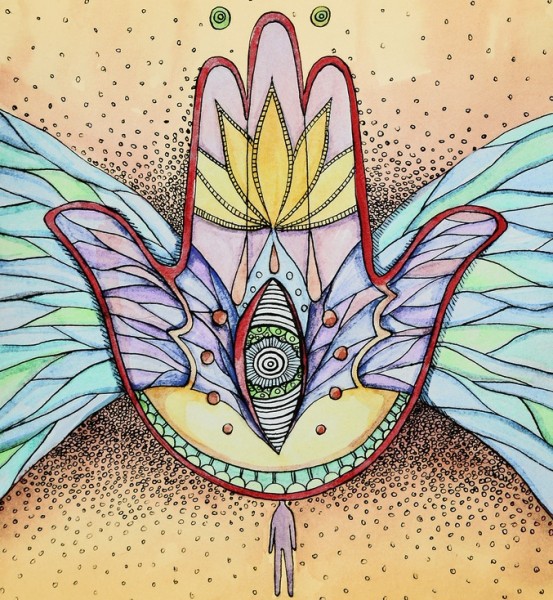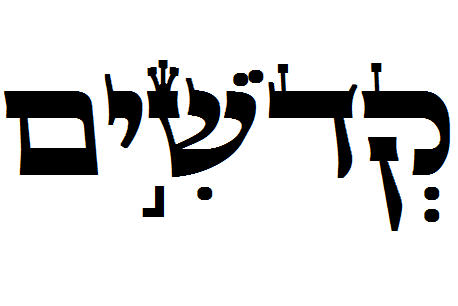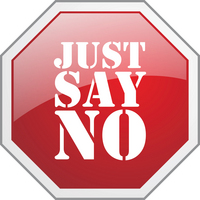 After fifty-six monthly newsletters featuring 2500 word essays, it should be no mystery to my regular readers that I am surreptitiously writing a book. When I get to newsletter number sixty I will have assembled nearly 150,000 words or 500 novel-sized pages. Looks like I have some editing to do! My goal is to get this project launched in 2015 and the working title is The Jewish Missionary Handbook. Yes, I realize this hints to Mormons and bedroom Olympics – but the fact is that the Mormons are a great example of tirelessly spreading the good news and sex sells books. I’m very passionate about getting this heartfelt message out there: I feel that North American Jewry has lost its “mission statement” and I intend to do my part to get us back on track. The following essay will serve more or less as the opening chapter.
After fifty-six monthly newsletters featuring 2500 word essays, it should be no mystery to my regular readers that I am surreptitiously writing a book. When I get to newsletter number sixty I will have assembled nearly 150,000 words or 500 novel-sized pages. Looks like I have some editing to do! My goal is to get this project launched in 2015 and the working title is The Jewish Missionary Handbook. Yes, I realize this hints to Mormons and bedroom Olympics – but the fact is that the Mormons are a great example of tirelessly spreading the good news and sex sells books. I’m very passionate about getting this heartfelt message out there: I feel that North American Jewry has lost its “mission statement” and I intend to do my part to get us back on track. The following essay will serve more or less as the opening chapter.
The Jewish People are the original missionaries in human history, with the goal of bringing the world to an loving appreciation of God, righteousness and holiness. Our deep-seated drive to teach the world about ethical monotheism is a spiritual legacy from Avraham, the first Jew. Over the millennia our attempts to missionize were thwarted by persecution and sadly we have retreated inward. At this point, before we can reignite our beacon to the nations, we have to “circle the wagons” and reclaim our critical message. It is my hope that the pages that follow serve as wake up call that living Jewishly 24/7 is attainable and attractive and that we can again lead by example. If we’re not living it, we can’t be giving it! I also hope that potential Jews-by-choice and those Jews-by-birth interested in returning to tradition can use this text to guide their ascent and focus on the pleasure of the process. My qualifications for writing are simple: this tome is autobiographical in nature and I am only recommending spiritual leaps that I have attempted myself. I don’t have a PhD; this is advice from the trenches, with lessons learned in the school of hard knocks during two decades of performing and teaching on the road.
To date, my newsletters have had a common theme: connecting Jews of all stripes to each other and to their Creator. Yes, I deviate from time to time to rant about childrearing, trends in music and travel adventures, but the majority of these articles focus on two basic words: “Kedoshim tihiyu,” or you shall be holy. That statement from  Leviticus sums up our core national aspiration. Everything else is commentary. While our sages debate exactly what this seemingly vague mitzvah might entail, the bottom line stems from the ending of the sentence: “for I, God, your God, am holy”. Put simply, we are to strive to be God-like in our behavior. Every circumstance is a “choose life” moment, a divinely orchestrated series of situations in which we are challenged to choose wisely. In other words, “What would Moses do?” is the question to keep on our tongues.
Leviticus sums up our core national aspiration. Everything else is commentary. While our sages debate exactly what this seemingly vague mitzvah might entail, the bottom line stems from the ending of the sentence: “for I, God, your God, am holy”. Put simply, we are to strive to be God-like in our behavior. Every circumstance is a “choose life” moment, a divinely orchestrated series of situations in which we are challenged to choose wisely. In other words, “What would Moses do?” is the question to keep on our tongues.
Striving for holiness requires that we define our terms. The first thing that comes to my mind when thinking about holiness is the angelic realms or the High Priest doing the Temple service on Yom Kippur. The Kotzker Rebbe reminds us that an exhortation to holiness in the book of Exodus uses the term “people of holiness shall you be,” in other words, holiness isn’t just for priests and angels. Within the context of our messy, mistake-ridden humanity we are to emulate the angels. In fact, “kedoshim tihiyu” was delivered not from Moshe to Aharon or to the elders, but from Moshe to the entire assembly. This lesson is for ALL of us. Reform, Conservative and Orthodox Jews, all those who are “opting in” to actively celebrating our heritage, must make holiness the first priority.
The root of the word kodesh means separation. That root is in many important Hebrew words that employ this same integral meaning: Kaddish serves to divide our prayer services and Kedushin is the word for marriage wherein two people separate themselves from all others. The first time holiness is mentioned in the Torah is right at the top with the creation of the day of rest. Sure enough, with the Kiddush we verbally disconnect Shabbat or Yom Tov from regular days. Do you see a pattern here? Immediately after telling us to be holy, God lists all the sexual pairings that are forbidden, yet another separation. The laws involving kashrut sanctify us as a holy nation AND separate us from the other nations. Yes, that sounds politically incorrect in a melting pot society. But if God’s treasured nation loses its holiness/separation, we assimilate, intermarry and eventually lose our ability to keep the light on, that is, the light unto nations that has so fundamentally transformed western civilization.
 The key to holiness is abstention. In truth, abstention sounds like a bummer. Who wants to be a party pooper? It’s clear, however, that the greatest rewards in life are gained through abstention. Marital bliss and the resulting gift of children can only take place when one abstains from extramarital affairs. Accessing the deepest potential of the Sabbath and holidays requires a long list of abstentions. In fact, the way we celebrate is largely framed in the negative by the things we CANNOT do. We then fill the empty space that remains with nurturing activities like prayer, long meals and family time that otherwise wouldn’t be possible. God seems to be teaching us the invaluable lesson that most worthwhile endeavors involve postponing immediate gratification for a brighter future. I’m reminded of the research study wherein children tempted with delicious marshmallows would receive extra ones if they could wait. The kids were tracked throughout their lives and those who were able to abstain from the treats for a certain period of time were the most successful in life.
The key to holiness is abstention. In truth, abstention sounds like a bummer. Who wants to be a party pooper? It’s clear, however, that the greatest rewards in life are gained through abstention. Marital bliss and the resulting gift of children can only take place when one abstains from extramarital affairs. Accessing the deepest potential of the Sabbath and holidays requires a long list of abstentions. In fact, the way we celebrate is largely framed in the negative by the things we CANNOT do. We then fill the empty space that remains with nurturing activities like prayer, long meals and family time that otherwise wouldn’t be possible. God seems to be teaching us the invaluable lesson that most worthwhile endeavors involve postponing immediate gratification for a brighter future. I’m reminded of the research study wherein children tempted with delicious marshmallows would receive extra ones if they could wait. The kids were tracked throughout their lives and those who were able to abstain from the treats for a certain period of time were the most successful in life.
Whereas Rashi claims that a state of holiness is the result of abstaining from the illicit sexual acts that are enumerated in the rest of the Kedoshim parsha, Ramban argues that holiness arises from abstaining from those things that are ARE permitted to us. He points out that one can keep kosher and still be a slovenly glutton. This teaches that holiness involves balance. Eat kosher food, but don’t be a pig! Learn Torah, but don’t be a snob. Make a fortune, but give tzedakah. We may be a separate nation that “dwells apart,” but we are loving and tolerant to others. In the search for holiness it’s tempting to go to extremes or attempt asceticism but as the Rambam states, the key is to remain integrated with one’s community and to walk on the “shvil hazahav” or a balanced path. Perhaps the best biblical example of the importance of balance can be found in the laws of becoming a Nazir (one who feels the need to get super-frum for a period of time.) One might think that undertaking “extra” commandments is commendable but remarkably, when one completes the Nazirite period, he or she must bring a sin offering.
Our sages divide our commandments into positive and negative. Thou shalt vs. thou shalt not. The “shalt” category is simply a list of 248 divine pathways for connection at our disposal. The 365 “shalt nots” are those activities that will clog up those divine pathways. Stop for a moment and ponder that the next mitzvah you do, even giving a buck to a beggar, is opening a divine pathway to holiness. The grand total is a God-given 613 commandments (and not 613 “suggestions!”) They are the key to retaining holiness. Yes, it is worthwhile to debate the nuances of observance, but not at the expense of simple faith and service. The mitzvot are our most invaluable inheritance. Every single mitzvah you do has “angels doing backflips.” Some claim that this system is archaic, valid only in biblical times or that Judaism today is a vestigial rabbinic construct. I’d like to argue that more than ever these principles are crucial for understanding the world, staying married, staying in shape, taking a weekly break from technology/media and igniting our imperiled national spark.
backflips.” Some claim that this system is archaic, valid only in biblical times or that Judaism today is a vestigial rabbinic construct. I’d like to argue that more than ever these principles are crucial for understanding the world, staying married, staying in shape, taking a weekly break from technology/media and igniting our imperiled national spark.
In fact, I believe that the net result of learning about holiness and applying the lessons leads to nothing short of a Matrix-style taking of the red pill. One enters a new realm, a powerful, palpable parallel universe. A realm filled with joy and tranquility. Even when everything seems to be going wrong! This transformation is the logical result of entering the path that God has created for his chosen people. Electrons have distinct pathways, planets have orbits, a forest left on its own will flourish. We humans are utterly miraculous in terms of the inexplicable design of our bodies and souls, the pinnacle of God’s creation. Of course we too have a path! We call it halacha, which literally means “the pathway” and is the term for the body of Jewish law. Seen this way, law isn’t confining or strict, it’s liberating! Taking on mitzvot with intention, understanding and balance can launch us on a trajectory where one can soar with God. Prayer becomes a mind-blowing tool of sweet partnership and dialog. Human interaction becomes refined and enlightened. Sounds utopian, right?
When we walk with God we can immediately perceive when we are off track. We feel the disconnection in our bones. I used to arrive at the synagogue on the High Holidays and wonder what I was doing there. I’m a “good person” after all! Why get on this woolen suit in the heat of late summer and stand here for hours with people I only see once a year? Transitioning to a mitzvah-focused life in my mid-twenties changed all that. Slowly but surely I was becoming spiritually sensitized to my own holy path and could intuit with some degree of confidence when I had strayed. It wasn’t about being ridden with guilt or feeling like I had to please my parents. Now I was in shul on the holiest day of the year with twenty-five precious hours to set things straight with my beloved Creator and best friend. Striving for holiness restores our internal compass. It clears the muck that clouds the glass and resets our magnetic north.
King David summarizes the formula for entry into holy space in the Psalm: “Sur meyrah v’asey tov.” Run from evil and do good. That’s it. Distance yourself from doing negative commandments and actively do the positive ones. Easy, right? Part of running from evil requires clarification of what is evil in the first place, and remaining vigilant against our temptation to the allure of the “dark side.” One might think that 613 commandments are more than enough. (Some think 10 are more than enough!) Well, there is  much more to it; our rabbis have instituted a system of fences to keep us from trampling on the mitzvot and enhance our chances of successfully accomplishing “sur meyrah.” These fences are an integral part of halacha and negotiating them requires learning the nuances with a qualified rabbi. “Sur meyrah v’asey tov” also informs the teshuva (return) experience…until we stop the mistake we are making, only then can we apologize and resolve not to repeat it. I immerse in a mikvah before Shabbat each week and it is upon these words that I meditate while underwater.
much more to it; our rabbis have instituted a system of fences to keep us from trampling on the mitzvot and enhance our chances of successfully accomplishing “sur meyrah.” These fences are an integral part of halacha and negotiating them requires learning the nuances with a qualified rabbi. “Sur meyrah v’asey tov” also informs the teshuva (return) experience…until we stop the mistake we are making, only then can we apologize and resolve not to repeat it. I immerse in a mikvah before Shabbat each week and it is upon these words that I meditate while underwater.
There are two pitfalls I want to disavow: one is the misconception of personal limitations keeping one out of the game. That’s the voice in your head that says, “But I’m too ______ (fill in the blank with “bad at Hebrew, broke, far from a synagogue, depressed, busy, annoyed…”) My friends, there are 613 mitzvot to choose from. Start with one and make it your own. Do it for the wrong reason (guilt, shame, because I told you to, to make money, you are afraid God will strike you down) and eventually it will become a natural part of your life for the right reason. Don’t wait for a miracle or a patient rabbi to appear. Be the person in your group of friends who joins a synagogue, takes a stand for Shabbat, doesn’t eat shrimp. One of my favorite lines in the Torah is, “it is not hidden from you and it is not distant. It is not in heaven…nor is it over the sea…rather the matter is very near to you, in your mouth and in your heart.”
The other pitfall is feeling that the “yoke of heaven” is a burden. Sure, no one wants a yoke around his or her neck! But a yoke allows oxen to plow and thereby bring sustenance and hopefully abundance into the world. Remember that all these rules and regulations are really our freedom, a source of pleasure and joy. Our sages point out that our biblical heroes lost their access to prophecy when they weren’t in a place of joy. You can see it in the text, for example, when during the twenty-two years Jacob was mourning Joseph he never spoke to God. We are trying to open our spiritual channels to perceive holiness. If observance is making you sad then it is counterproductive. Get out, lighten up, try another mitzvah, try another synagogue, try another community. Torah is “our life and the length of our days.” We are commanded to serve God with happiness and all the calamities mentioned in our holy texts only occur when we fail to do so.
Once the Jewish world gets its collective act together I believe anything is possible. An end to war, hunger, misery. We are seeing this come to fruition in our own times. So much remarkable technology emanates from our beloved Promised Land. Jewish Harvard professors teach the world about happiness. Zany Chabad rabbis on TV enlighten non-Jewish families about shalom bayit (peace in the home.) An unbroken chain of Jewish Federal Reserve chairmen keeps the world economy afloat. Now if we would just learn how to get along as a People, we could truly teach the world about peace. I have found that the most successful members of clergy (in all Jewish denominations) are those that eshew the ivory tower in order to get in the trenches helping congregants do mitzvot. We have tolerated enough Pew reports and population studies to see that promoting Judaism removed from mitzvot and the resulting gift of holiness is like trying to animate a body without a spine. Rabbi Shlomo Carlebach used to say that kids are leaving synagogues not because they don’t want religion, but because they DO want religion. Jewish unity is the final cornerstone of our grand mission and I believe we won’t find that elusive unity until we learn to celebrate our differences and rally around Torah.
enlighten non-Jewish families about shalom bayit (peace in the home.) An unbroken chain of Jewish Federal Reserve chairmen keeps the world economy afloat. Now if we would just learn how to get along as a People, we could truly teach the world about peace. I have found that the most successful members of clergy (in all Jewish denominations) are those that eshew the ivory tower in order to get in the trenches helping congregants do mitzvot. We have tolerated enough Pew reports and population studies to see that promoting Judaism removed from mitzvot and the resulting gift of holiness is like trying to animate a body without a spine. Rabbi Shlomo Carlebach used to say that kids are leaving synagogues not because they don’t want religion, but because they DO want religion. Jewish unity is the final cornerstone of our grand mission and I believe we won’t find that elusive unity until we learn to celebrate our differences and rally around Torah.
So there’s the mission statement. Now on to the commentary. Enjoy the adventures in the book. I had to endure over a thousand flights (in coach!) to bring you these stories and insights. Every month I swore I wouldn’t write another newsletter. But I did. Step by step over the past six years I worked towards a goal of writing a book about my passion in life. Baby steps, persistence and patience are the key elements to reaching any goal. So too with our collective quest for holiness and redemption. That’s why Jacob saw a ladder and not a rocket ship. You’ve got to sweat the climbing, one rung at a time. I hope this humble manuscript will encourage you to “take it up a notch” in your quest for holiness and connection. I welcome all of you to share with me your personal journeys, both the triumphs and crises. We can learn so much from one another. I’m so grateful that you have taken the time to share my journey.
 Shlomo Carlebach and Debbie Friedman started something big. Much like the Internet freed visionaries to rip away the barriers of industry, these two composers wrote music from their hearts and delivered it directly to the people. They didn’t go to a conservatory to get degrees in composition. Nor did they spend six years at a cantorial school. They heard music in their heads, translated it for the world to access with simple guitar chords and sweet, non-operatic voices, and hit the road to any venue open to their spiritual message.
Shlomo Carlebach and Debbie Friedman started something big. Much like the Internet freed visionaries to rip away the barriers of industry, these two composers wrote music from their hearts and delivered it directly to the people. They didn’t go to a conservatory to get degrees in composition. Nor did they spend six years at a cantorial school. They heard music in their heads, translated it for the world to access with simple guitar chords and sweet, non-operatic voices, and hit the road to any venue open to their spiritual message. unprecedented tranquility, success and freedom. It is the music of a profound and unprecedented byproduct of the 20th century: the optimistic Jew.
unprecedented tranquility, success and freedom. It is the music of a profound and unprecedented byproduct of the 20th century: the optimistic Jew. CD titles on its website; Mostly Music, associated with the Orthodox movement, carries the work of over 1300 different artists. Just last week the annual Song Leader Boot Camp offered three full days of training in the art form to over 90 young singers and composers. The main CJM online outlet,
CD titles on its website; Mostly Music, associated with the Orthodox movement, carries the work of over 1300 different artists. Just last week the annual Song Leader Boot Camp offered three full days of training in the art form to over 90 young singers and composers. The main CJM online outlet,  about 1500 CDs to break even on production costs. That was based on the $15 per album that they could typically charge audiences after a concert, a goal that the average working musician could fathom. With iTunes, the breakeven point jumps to nearly 50,000 singles that must be sold. The new model has emasculated the long form album, the beloved collections that gave singers a dozen songs to make their artistic statements. Spotify, the rising star of subscription services, referred to as the “iTunes killer,” pays the artist .3 cents per listen. I shudder to do the math.
about 1500 CDs to break even on production costs. That was based on the $15 per album that they could typically charge audiences after a concert, a goal that the average working musician could fathom. With iTunes, the breakeven point jumps to nearly 50,000 singles that must be sold. The new model has emasculated the long form album, the beloved collections that gave singers a dozen songs to make their artistic statements. Spotify, the rising star of subscription services, referred to as the “iTunes killer,” pays the artist .3 cents per listen. I shudder to do the math. Haftorah trope with our organist Aryell Cohen, and mastered Mussaf with Cantor Joe Gole who took me under his wing. I had to learn the portions both for my LA ceremony and the one that followed a few weeks later at the holy Western Wall. One night my mom recognized my accomplishments in that short period of time. She came into my bedroom as I negotiated our ancient texts and said, “Sammy, if you keep pursuing your goals like you did this year, there is nothing that will stop you.” Thanks Mom…I’ve been a workaholic ever since.
Haftorah trope with our organist Aryell Cohen, and mastered Mussaf with Cantor Joe Gole who took me under his wing. I had to learn the portions both for my LA ceremony and the one that followed a few weeks later at the holy Western Wall. One night my mom recognized my accomplishments in that short period of time. She came into my bedroom as I negotiated our ancient texts and said, “Sammy, if you keep pursuing your goals like you did this year, there is nothing that will stop you.” Thanks Mom…I’ve been a workaholic ever since.